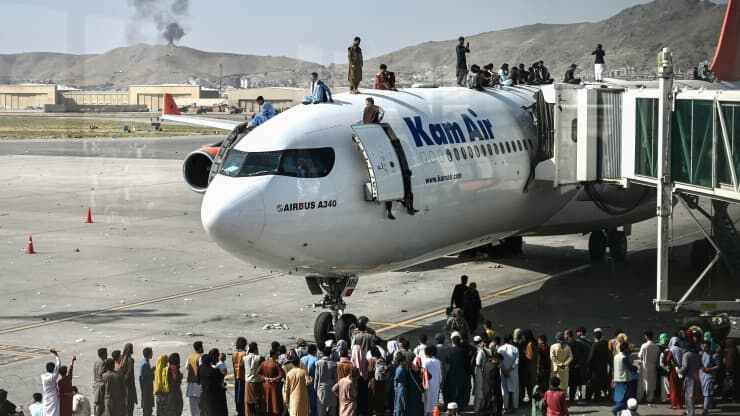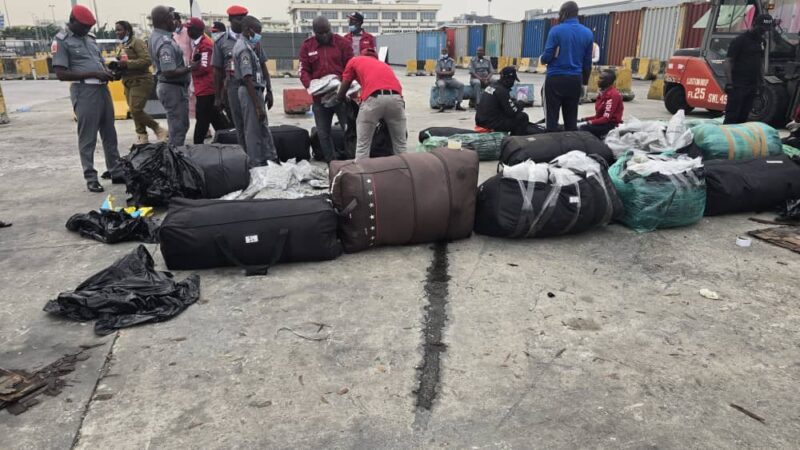Taliban Takeover: Airlines warned to avoid Afghan airspace


Airlines have been advised to avoid the Afghanistan airspace in the wake of Taliban takeover, an Afghan aviation authority has said.
In a circular issued on Monday, the Afghanistan Civil Aviation Authority the country’s airspace had been “released to the military” and advised airlines to avoid its air corridors.
The authority, however, did not specify which military, given the collapse of local security forces in the face of the Taliban offensive.
The ACAA added that the civilian side of Kabul airport was closed until further notice.
As a result, many airlines flying the route have diverted flights to other destinations, TW has gathered.
United Airlines, British Airways, and Virgin Atlantic had already stopped using Afghanistan airspace on Sunday as U.S.-led forces departed and Western nations scrambled to evacuate citizens.
On Monday, Qatar Airways, Singapore Airlines, Taiwan’s China Airlines, Air France KLM, and Lufthansa followed suit.
Air France said six routes were affected: Bangkok, Delhi, Singapore, Mumbai, Madras, and Ho Chi Minh.
Lufthansa said flight times to India and some other destinations would be extended by up to one hour, in a move that will add to fuel costs.
In a notice to pilots on its website, the Afghanistan Civil Aviation Authority (ACAA) said any transit through Kabul airspace – which covers all Afghanistan – would be uncontrolled, meaning planes would no longer be guided from the ground.
“Kabul airspace has been released to the military. Advise transit aircraft to reroute,” the notice said.
“Any transit through Kabul airspace will be uncontrolled. Surrounding FIRs (air traffic control regions) have been advised.”
Some flights turned around right after the announcement. Flight tracking website FlightRadar24 showed an Air India flight from Chicago to Delhi changed course and exited Afghanistan’s airspace shortly after entering, while a Terra Avia flight from Baku to Delhi did the same.
The Air India flight later diverted to Sharjah in the United Arab Emirates for more fuel, FlightRadar24 said. Air India did not respond immediately to a request for comment.
Analysts said flights between Europe and parts of Asia would be among those most affected, adding to growing route headaches after Middle East conflicts and the forced diversion of a jet over Belarus, which put its skies off-limits to many airlines.
A Western aviation official said the withdrawal of air traffic control services would also have implications for any airlines seeking insurance to keep flying over Afghan territory.
DEADLY PRECEDENTS
Airlines and governments have paid more attention to the risks of flying over the airspace in volatile zones in recent years after two deadly incidents involving surface-to-air missiles.
A Malaysia Airlines plane was shot down over eastern Ukraine in 2014, killing all 298 people on board, and a Ukraine International Airlines jet was downed by Iran’s military in 2020, killing all 176 passengers and crew.
The U.S. Federal Aviation Administration in July imposed new flight restrictions over Afghanistan for U.S. airlines and operators.
It said flights operating below 26,000 feet were prohibited in the Kabul Flight Information Region, which largely covers Afghanistan, unless operating in and out of Hamid Karzai International Airport, citing the risk “posed by extremist/militant activity.”
That did not apply to U.S. military operations.
Other countries, including Canada, Britain, Germany, and France, had also advised airlines to maintain an altitude of at least 25,000 feet over Afghanistan, according to the website Safe Airspace.
Commercial flights have also been affected: Emirates suspended flights to Kabul and Turkish Airlines cancelled scheduled flights to and from Afghanistan.
Culled from Reuters







